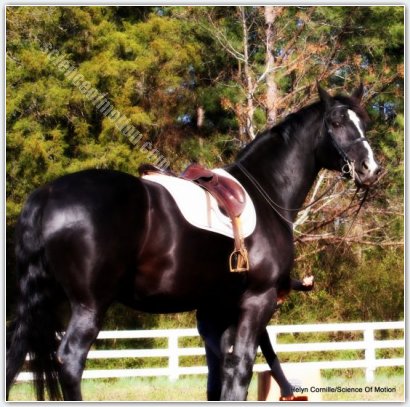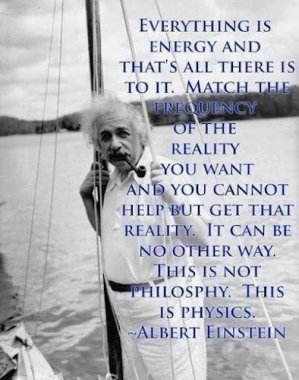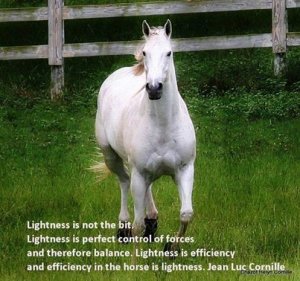Match The Frequency
Chazot 36
Match the frequency
of the reality you want

He was thinking, “Only Einstein can understand that,” and Caesar, who was looking at us from his stall asked, “Why does he think that energy is hard to understand?“ I told him, because humans are not as sensitive to energy as we are. For us, energy is a natural way of communication. We have not rewired our brain with language, script and other ways of communication as human have done. Inherently, they probably can feel energy as well as we do. In fact, some are more sensitive to it, but overall, they have lost the sense in favor of other senses.

Prior to 2003, when they started to investigate the plasticity of muscles function, they believed that muscles shortened and lengthened to move bones. I remember a private conversation that he had with Karren Gelman. Her explanation opened new perspectives, The concept that muscle has concentric (shortening), isometric (stay same length) and eccentric (stretching) contractions is true. But this refers to individual muscle fibers, not the muscle body which has specific fiber types, architecture and connective tissue components. Concentric contraction tends to go along with the old style idea of a muscle: simple architecture, sarcomeres in series, long muscle fibers and few connective tissue insertions. When a simple muscle like that contracts, it can actually shorten because each sarcomere along a long line in a long fiber is shortening, and is usually fast twitch fibers. This kind of muscle architecture and activity can generate power, the power needed to move a joint in locomotion when it is attached to a stiff tendon that can transmit the power.
Even though this is what everyone tends to think of as muscle
function, it only makes up a fraction of what muscles do in the body. The most common muscle configuration for posture is a force-producing muscle. This kind of muscle has short twitch fibers, which are oxidative and more economical to use. They are often referred to as fatigue-resistant. In a force producing muscle, there are many complex connective tissue compartments, short fiber length and sarcomeres in parallel.
Manchester commented, “They really believe that. He was the first human that I meet who did not try to increase my vertebral column range of motion. Most of them even continue to believe that increasing the amplitude of our vertebral column movements will improve our gaits and performances. Very often, when a student is riding me, he concentrates the rider on controlling forces instead of making gestures. At first, I always have to protect my back from the student movements. Students come from many different schools of thought but there is a unity of errors, shifts of their body weight, excessive motion of the lumbar vertebrae, tension on their forearms and heavy contact on the bit. They all execute movements, legs movements, hands movements, back movements. Their gestures, which they refer to as ’rider aids,’ are like formulas that I am supposed to know For me these gestures are associated in my mind with the memory of lameness. I have been submitted to this type of equitation and I have been lame for many years because of this type of equitation. When he explains that most students realise that they are entering a new world. Few resists referring to their education as ‘classic.’ I like when he quietly responds, “Well, General Decarpentry, author of the very classical ‘Academic Equitation’, wrote in reference to the hands, “Hand movements diminish as dressage progresses to the point of giving an illusion of immobility.” (Academic Equitation, J. A. Allen & CO LTD. 1971 p. 44)
Lightness is a phenomenon that no student has ever truly experienced until, when they let me do it, I achieve advanced control of my balance and they have the feeling to be seat on a gliding feather. I barely touch the bit and I can hear him saying, ‘Lightness is not the bit; lightness is an advanced coordination of the  whole physique.’ He says that all the time, but only when a student has experienced this feeling, the students truly understand what he is talking about. Everyone believes that one’s horse is light but this is a totally different feeling. Regularly they stop and I can hear words like ‘Whoa, OMG, I never experienced that before’. I liked Carole’s reaction, she gently touched my neck saying, ‘this was delightful.’ Caesar could not resist to add, ”You know; when you repeat his words, you have a French accent”. Sometime I wonder if World War II really ended; when you have a Hanoverian and a Selle Français in the same barn, they always ignite each other.
whole physique.’ He says that all the time, but only when a student has experienced this feeling, the students truly understand what he is talking about. Everyone believes that one’s horse is light but this is a totally different feeling. Regularly they stop and I can hear words like ‘Whoa, OMG, I never experienced that before’. I liked Carole’s reaction, she gently touched my neck saying, ‘this was delightful.’ Caesar could not resist to add, ”You know; when you repeat his words, you have a French accent”. Sometime I wonder if World War II really ended; when you have a Hanoverian and a Selle Français in the same barn, they always ignite each other.
Manchester and Caesar often talk about the considerable disturbances created by the riders’ movements. I don’t have much experience about that because he does not communicate with me through gestures. Instead, it is all about subtle nuances in muscle tone, which I feel as energy. On the race track, the jockeys were not much a nuisance when they were in balance over their knees in their speed position. I did not like it when they were seat on my back and I hated their rising trot. He uses sometime the rising trot when we are working in the large piece of land behind the farm, but it does not feel the same at all. He stays at all times very close form the saddle and he does not do this back and forth movement of the body that the jockeys were doing. He goes up on his stirrups and then comes back on contact with the saddle again but there is no back and forth shifts of his body weight.
Manchester came back onto the conversation. ”I have observed that more and more, he is talking about energy. He teaches the students how to balance their body vertically over their seat bones and focus on reducing their vertebral column movements until they match the small range of motion of my thoracolumbar spine. Then, instead of gestures, he talks about nuances in muscles tone. He teaches them how to tune their body with me. He is very emphatic about the concept of frequency. He says, ‘a horse vibrates at a given frequency and you need to match the frequency. The timing of your leg pressure might be correct, the intensity of the pressure might be adequate, but if the rapidness, how quick you increase your leg pressure, is faster than the horse frequency, Manchester will protect himself from you,’ and I do. Rapid pressures disturb my body rhythm and I instinctively protect myself; these rapid pressures annoy me.
When the student properly modulates the nuances in muscle tone and the frequency of these nuances, the dialogue is comfortable. This is when I can hear him saying to the student, ‘Horses sense energy. This is their true level of subtle sensitivity. Increase and decrease of your muscles tone creates energy and this is what the horse perceives. This is why you must move beyond the so called “correct aids” and other gestures. These gestures are simply teaching techniques aiming at a more important objective that is teaching how to create, modulate and redirect forces through your body. Energy is about nuances but also integrity of your whole physique. If you move one part out of synchronization or if you contract one muscle group too much or relax one muscle group, you lose your integrity and your energy is dissipated.”
“The equitation of gestures is equitation of the past.” Caesar was now animated. Explaining, “When I was in France, riders based their equitation on the reins effects. If I remember right it was 5 reins effects that were supposed to create specific reactions of our body. I never liked it. They were pulling on one rein and by protection I was pulling back. In America they talked about the inside leg and the outside reins. Never make sense to me and I was pulling back the same way. I was annoyed by their hands action thinking why they don’t use their brain instead. Then, he worked me in hand and he rode me and it was his brain guiding my brain toward a sound coordination. I felt his energy even if he believes that it was his nuances in muscle tone. Muscles create energy and I felt the energy. It was the right frequency and I did not have any desire to resist. When I realize that he was guiding my brain toward a body coordination restoring my soundness, I was 100% with him. Not really, in fact; I have this bad habit of lowering the neck and pushing on the bit down and I still do that even if I don’t like it.” It was then Manchester turn to say, “That is because you are French.” Caesar was too much in his thought to reply thinking, “I don’t think that Einstein’s thought is as abstract as it looks. He wanted our soundness, he tuned his mind, and his body to our frequency and he got our soundness. Of course this is not a magic formula. Of course this is directed by advanced understanding of our physiology. Of course we work and sweat and fail and sweat again, but once we have these two strides sound, we have done wonder in our brain and nervous system. I heard him talking about our central pattern generators, which have the capacity to learn from each other. I remember the quote. ‘Movements are generated by dedicated networks of nerve cells that contain the information that is necessary to activate motor neurons in the appropriated sequence and intensity to generate motor patterns. Such networks are referred to as Central Patterns Generators, (CPGs). The most basic CPGs coordinate protective reflexes, swallowing or coughing. At the next level are those that generate rhythmic movements. Some, such as respiratory CPGs, are active through life, but are modulated with changing metabolic demands. Others such as locomotor CPGs, are inactive at rest but can be turned on by signals from command centers.’ (Sten Grillner, The Motor Infrastructure From Ion Channels To Neuronal Network.).
“Understanding this subtlety of my nervous system was very helpful for me. One day I walked home frustrated; I could not control my old habit of lowering the poll and pushing on the bit and consequently, I could not control my balance. He told me picking up my feet after work, ‘don’t worry; your central pattern generators can learn from each other. They will work in your sleep and you will be able to do it.’ This helped me through my difficult days. I know that we are constructed of systems within systems within systems and we need time to tune all these systems. Riders are not different, I heard him saying that to one of his student and the next day as she worked me in hand, I felt a connection that did not happened the previous days. I halted and look at her and she look at me and there was no need to say anything.”
Chazot


